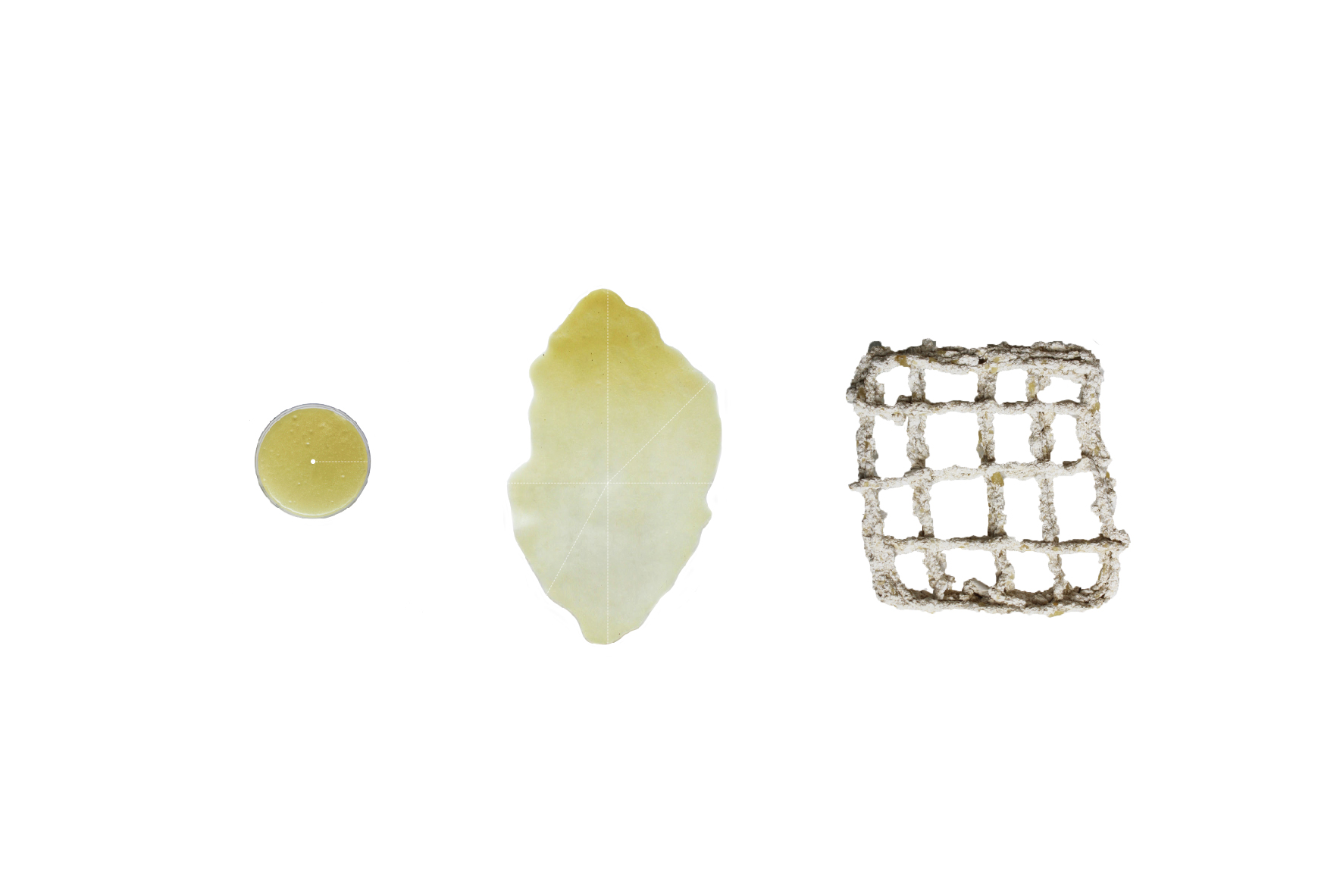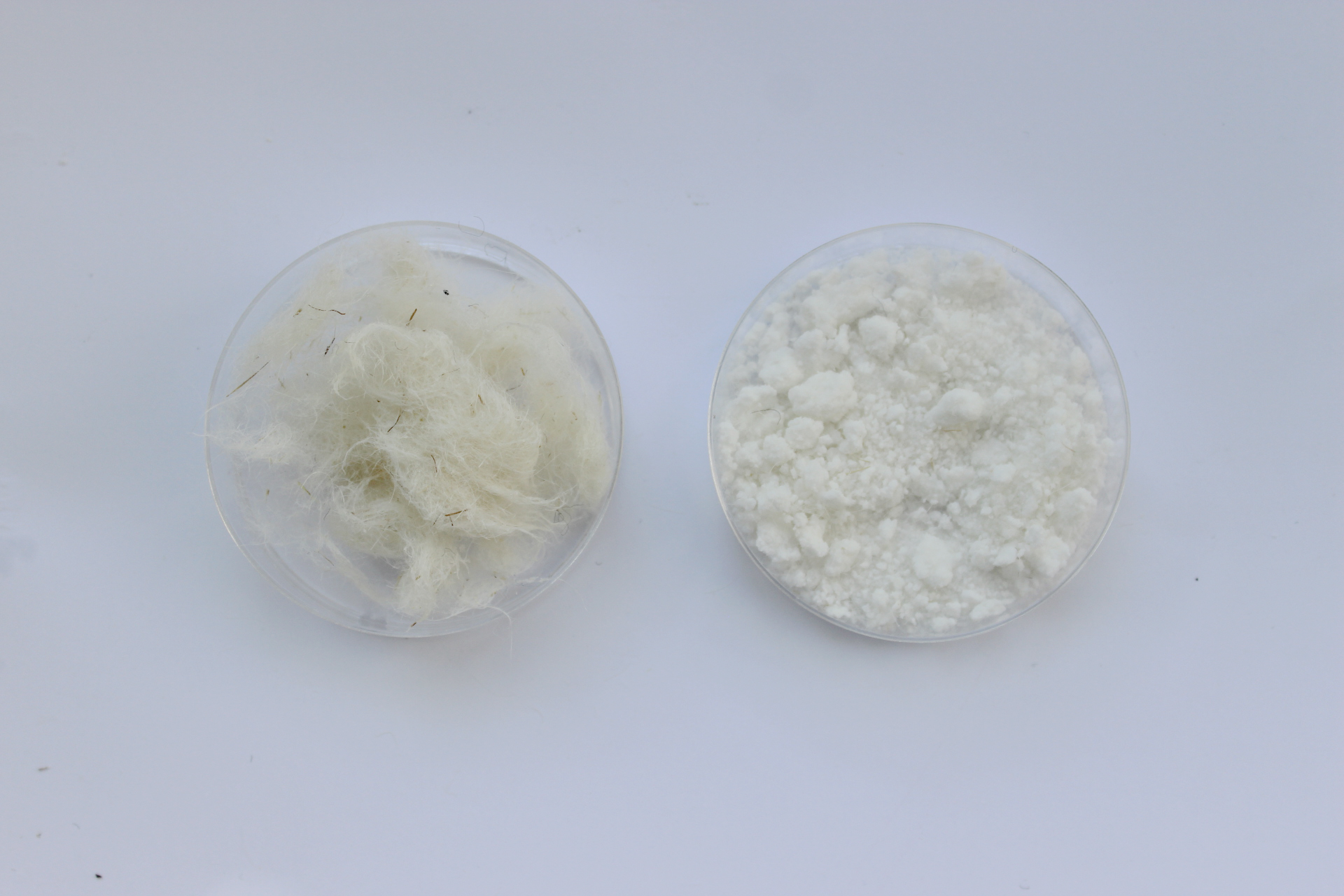Experimental wool material

Useful information
- Team members
- Petra Garajová
- Country
- Spain
- Keywords
- wool waste 3D printing global impact material research
Short Description
Experimental wool material is a research project focused on the analyses of wool waste.
Detailed Description
The aim of the project is to bring the idea of sustainability into the architecture and textile industry through design and digital fabrication. It examines the boundaries of wool which can be used not only as a textile but also as an architectural material.Sheep raised primarily for food is a source of poor quality wool.Their wool is treated as an excess material that can not be sold to any companies. The new proposed material should thus solve the problems of local farmers and the wool supply chain. I am working on turning wool fibers into a powder so that it can be 3D printed and used in architecture and fashion. I am collaborating with a small local farmer in the north of Madrid who gave me wool waste for my research. Firstly, the wool fleece has to go through a cleaning process. Secondly, the structure of the wool fiber has to be deformed by crystallization so that we can mix it into a powder.After that the wool powder is mixed with additives and other materials.
Project Details
- Does your design support sustainable production, embodying circular or regenerative design practices?
The project seeks to solve the dead ends of the textile industry with new innovative materials. At the same time, it is important to reconsider timeliness and sustainability of architectural materials. It also points out the current problems in the production process.
- Does your design use principles of distribution and open source?
I hope it can improve the wool supply chain on a global scale. Countries like Spain, Slovakia and Czech which are really close to me - are struggling with the same problem. Included the countries most affected by the wool industry.
- Does your design promote awareness of responsible design and consumption?
Yes, I would like to emphasize the need to rethink industries by using new technologies such as 3D printing and looking for new (waste) biomaterials implemented in mentioned fields. Digital fabrication can offer us a huge range of designs and solutions with this waste material.
Images


